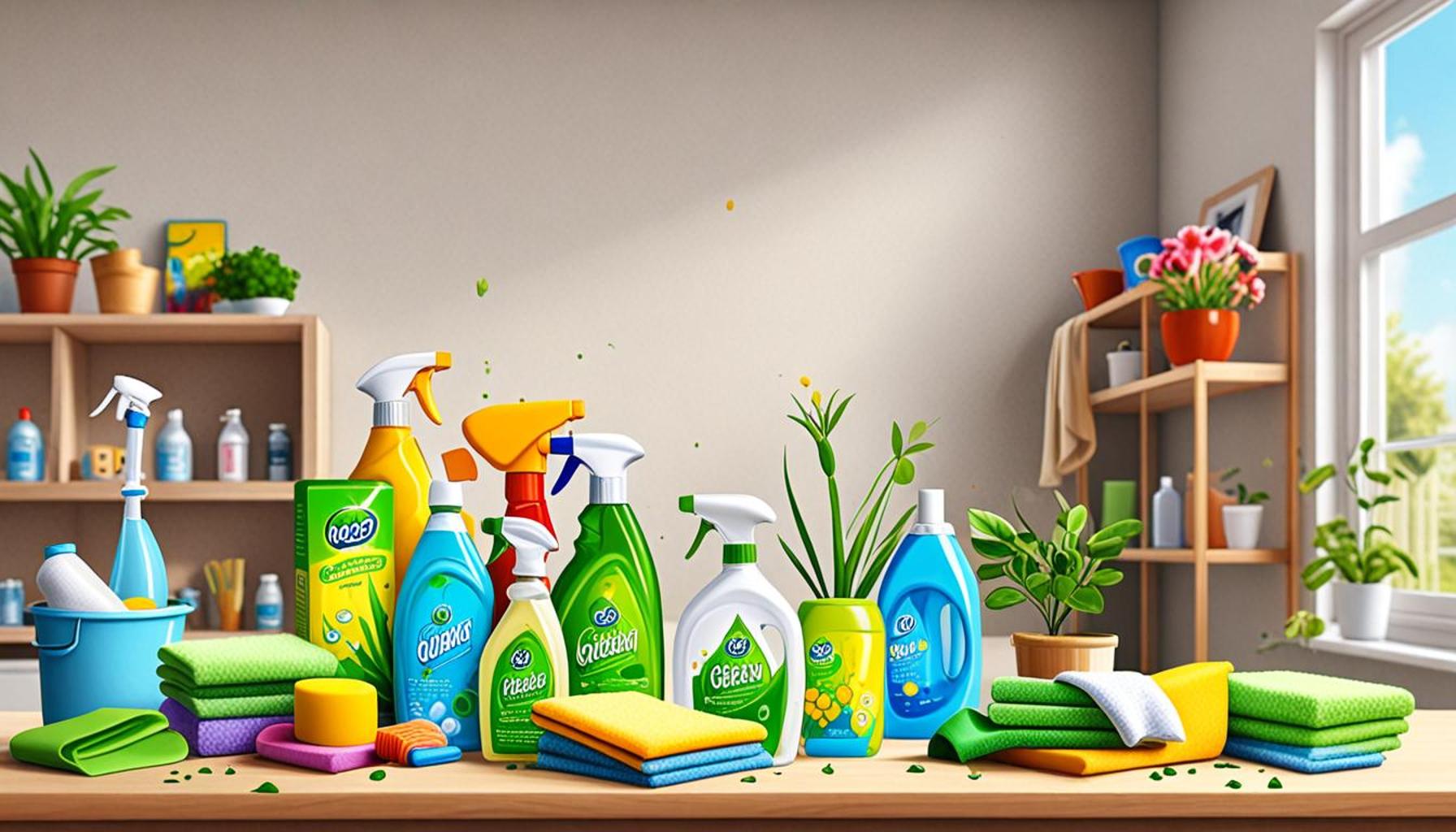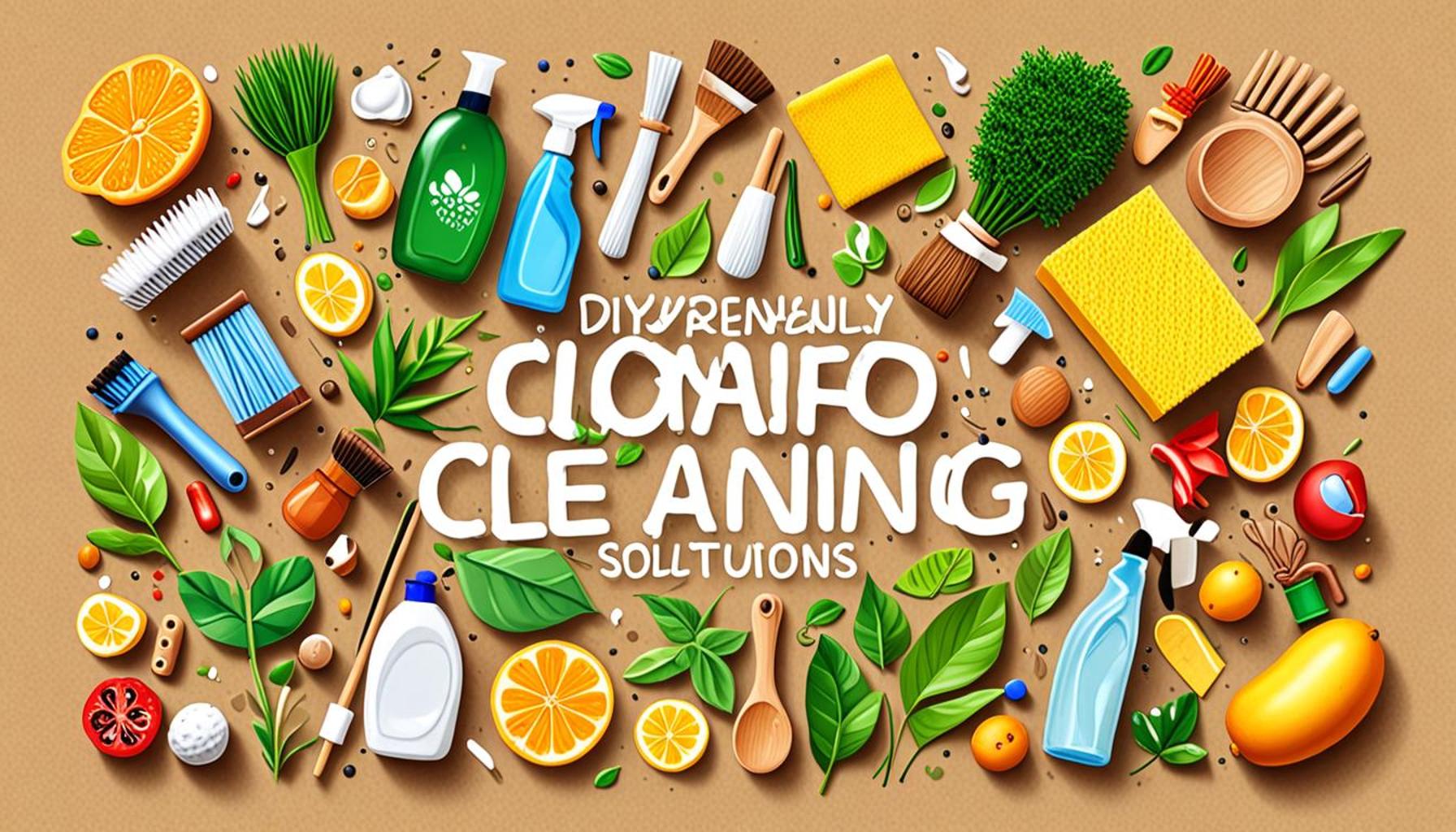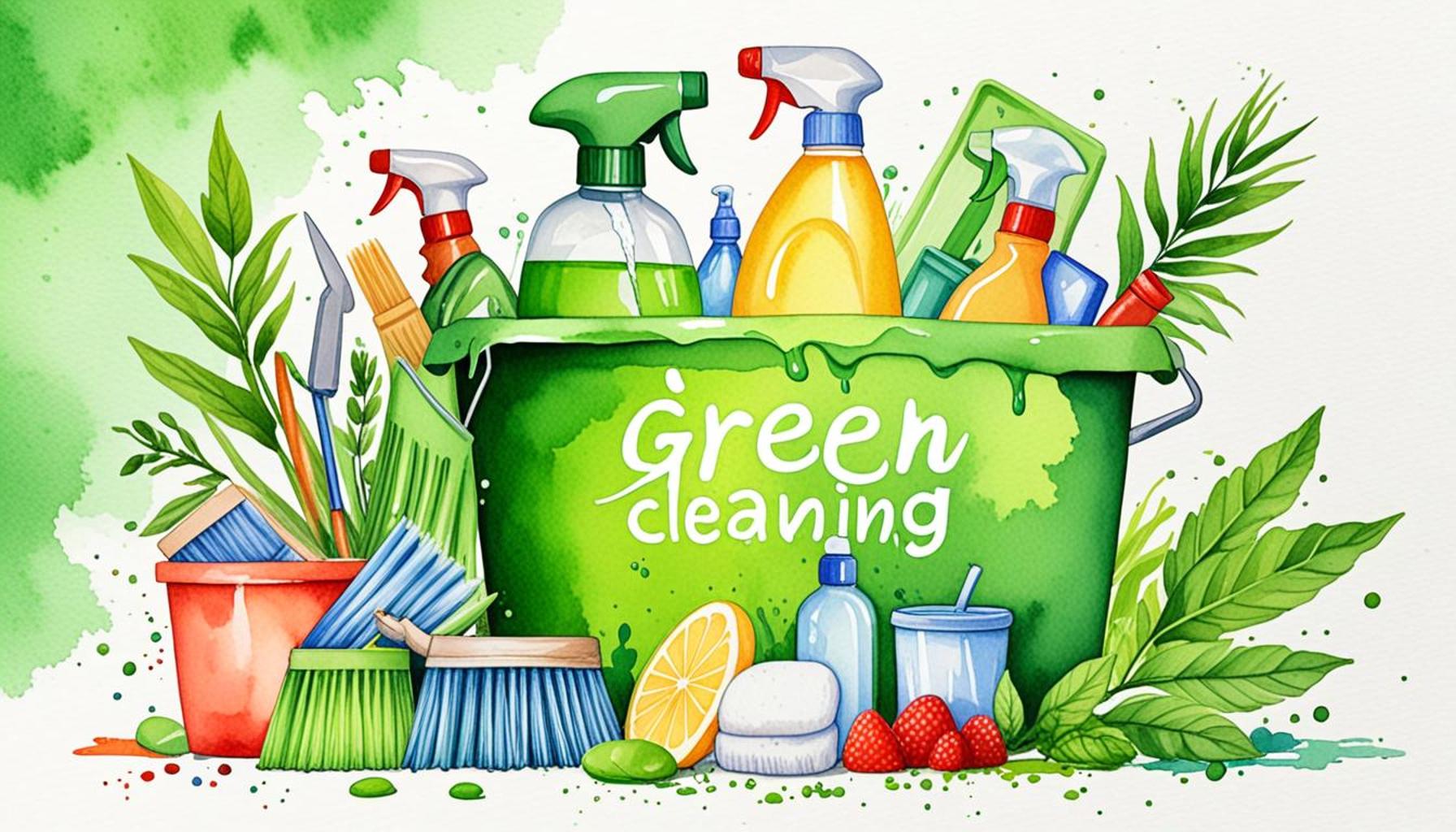Comparative Analysis of Eco-Friendly vs. Traditional Cleaning Products: Cost, Efficacy, and Health Impacts
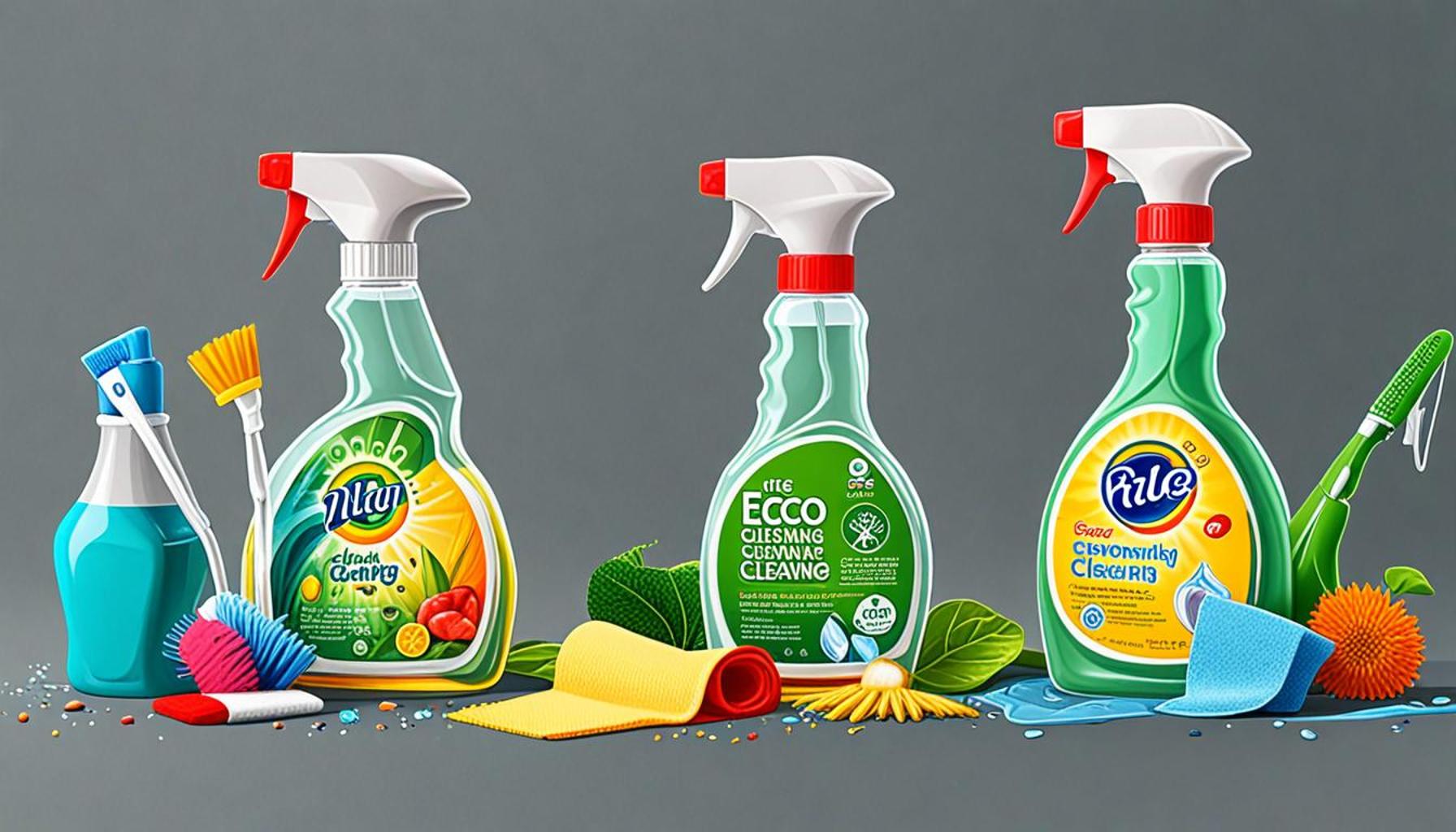
Understanding the Landscape of Cleaning Products
As we navigate through an age where ecological concerns and personal health are becoming paramount, the selection of cleaning products is no longer just about keeping surfaces spotless. It also involves a thoughtful examination of the implications these products hold for our environment and our well-being. With this growing awareness, consumers in the United States are increasingly weighing eco-friendly solutions against traditional cleaning products, revealing a landscape filled with complex choices.
Cost Considerations
One of the most noticeable differences between eco-friendly and traditional cleaning products is their price point. Eco-friendly options often incur higher costs due to the use of natural, renewable resources and sustainable production methods. For instance, a bottle of plant-based cleaner might retail for $8, while its conventional counterpart could be found for as little as $3. While some may question whether the additional expense is justified, others counter that investing in eco-friendly products can lead to long-term savings, particularly when considering potential health-related costs arising from exposure to harsh chemicals found in traditional cleaners.
Evaluating Efficacy
The debate over the efficacy of eco-friendly cleaning products compared to traditional cleaners remains vigorous. Many people have experienced the powerful cleaning properties of products filled with synthetic chemicals, which often promise quick results. However, emerging studies indicate that eco-friendly cleaners can be sufficiently effective. For instance, several brands have demonstrated that their products can remove tough stains and disinfect surfaces just as well as conventional ones. Nevertheless, personal experiences can vary; some users may not find the same level of performance, leading to ongoing scrutiny and discussion within the consumer community.
Health Impacts
The composition of cleaning products directly influences not just the environment but also human health. Traditional cleaners frequently contain toxic substances like phosphates, ammonia, and bleach, which while effective at killing germs, can trigger respiratory issues or skin irritations in some individuals. In contrast, eco-friendly cleaners primarily utilize biodegradable ingredients that are generally recognized as safe. This burgeoning interest in health-conscious living extends beyond individual households and into public spaces, with schools and hospitals increasingly adopting greener cleaning solutions. For example, the trend has prompted organizations to prioritize sustainability, leading to improved air quality and reduced health risks.
While the shift towards eco-friendly cleaning products signifies a positive change, it also raises pivotal questions. Can consumers truly afford to transition to greener alternatives, and will they continue to vie for supremacy in efficacy? With the market continually expanding and evolving, it’s crucial to arm oneself with knowledge about the products being used.
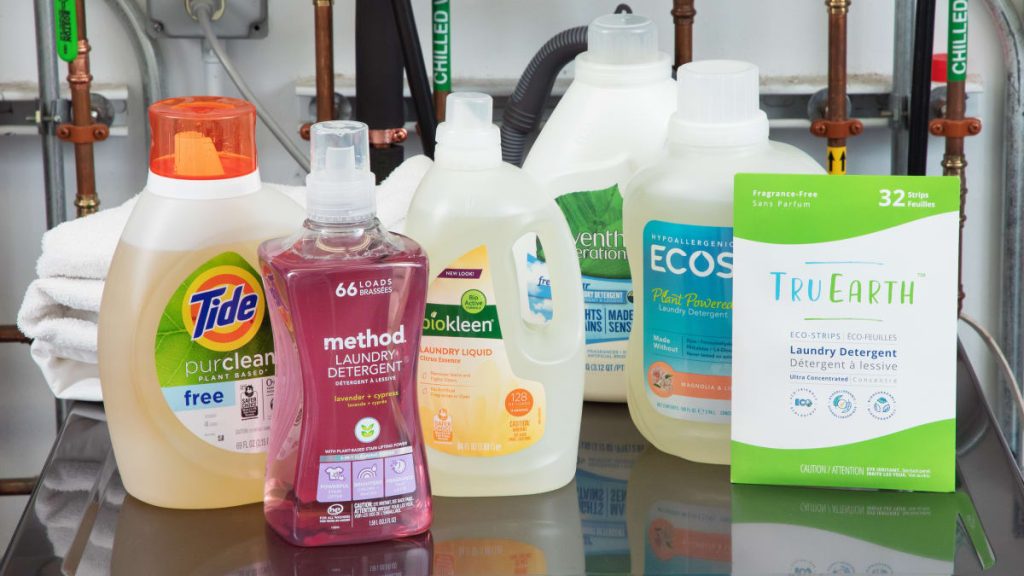
In conclusion, understanding the differences in cost, efficacy, and health impacts of cleaning products can empower households to make informed choices. By doing so, not only can we benefit our communities and ourselves, but we can also take meaningful steps toward environmental stewardship. The exploration into eco-friendly versus traditional cleaning solutions reveals that each option carries its own set of pros and cons, inviting consumers to weigh accessibly and responsibly as they redefine their cleaning routines.
DISCOVER MORE: Click here to learn about eco-friendly options
Cost Considerations in Cleaning Product Choices
When consumers set out to choose between eco-friendly and traditional cleaning products, the price tag often becomes a pivotal factor. On the surface, eco-friendly cleaners appear more expensive; however, a deeper examination reveals that initial costs may not tell the entire story. The average price for a standard bottle of eco-friendly cleaner can be around $8, in sharp contrast to the typical $3 for a conventional counterpart. This disparity raises essential questions about what consumers are truly paying for and highlights the divergence in production and marketing strategies between the two categories.
Breaking Down Costs
To further understand the financial implications, here are several aspects to consider regarding both types of cleaning products:
- Manufacturing Practices: Eco-friendly brands often invest in sustainable sourcing and production methods that drive up costs. However, they also emphasize transparency, which some consumers might find worth the extra expense.
- Ingredients: Traditional cleaners may rely on cheaper synthetic chemicals, which can yield lower upfront costs but could lead to higher costs in long-term health and environmental ramifications.
- Concentrated Formulas: Many eco-friendly products are available in concentrated forms, allowing users to dilute the product for use. This can lead to a smaller expenditure over time as less product is required per cleaning session.
- Environmental Costs: The long-term financial burden of environmental degradation caused by harmful chemicals isn’t explicitly reflected in the price of traditional cleaners, potentially shifting future costs to society.
Despite the higher upfront cost of eco-friendly products, many users argue that the benefits justify the price. Reports indicate that the average household may spend more on healthcare in the long run due to health issues caused by exposure to toxic chemicals found in traditional cleaners. Conditions such as asthma, allergic reactions, and skin irritations may lead to significant medical expenses that could otherwise have been avoided.
Evaluating Efficacy: Are Eco-Friendly Products Up to the Task?
The efficacy of cleaning products emerges as another critical frontier in the comparative analysis of eco-friendly and traditional cleaners. Skepticism surrounding the performance of green products is common, as many consumers associate robust cleaning with chemical-laden solutions. However, increasing scientific evidence and real-world feedback suggest that this perception may be shifting. Studies have shown that many eco-friendly cleaning products can indeed rival their traditional counterparts in terms of effectiveness.
For example, products made from natural ingredients like vinegar, baking soda, and essential oils are proving effective in handling common household cleaning tasks, from removing stains to disinfecting surfaces. Recent surveys have highlighted that:
- Approximately 70% of users report satisfaction with the cleaning power of eco-friendly products.
- About 85% of consumers who switch to natural cleaners notice little to no difference in performance when compared to traditional cleaners.
Nonetheless, efficacy remains a personal and subjective experience. Different households may have various environmental concerns and dirt types, leading to varied opinions on what constitutes an effective cleaning solution. As more brands innovate and refine their offerings, the dialogue on finding the right balance between cost and efficacy continues, urging consumers to evaluate their choices more closely.
| Eco-Friendly Products | Traditional Cleaning Products |
|---|---|
| Environmentally Safe | High Efficacy |
| Reduced harmful chemical runoff | Often contain potent antibacterial agents |
| Safe for children and pets | Designed for tough stains and dirt removal |
| Health Impact | Cost-Effective |
| Less respiratory irritation | Often cheaper per ounce/mL |
The comparison between eco-friendly and traditional cleaning products reveals a fascinating landscape of choices for consumers. Eco-friendly products emphasize sustainability and safety, resulting in fewer toxins in our environment and homes, making them an attractive option for households concerned about health impacts. For example, using biodegradable ingredients reduces chemical runoff, which is better for wildlife and ecosystems.On the other hand, traditional cleaning products tout cost-effectiveness and high efficacy. Many of these products are formulated with potent antibacterial agents designed to tackle even the toughest stains. Despite potential health risks, such as respiratory irritation, their attractiveness often lies in their immediate results and lower prices per unit, making them a staple in many households.These insights highlight dynamic considerations in the debate over cleaning products and what they mean for consumers focused on health, efficiency, and environmental protection. The growing availability of both types ensures consumers increasingly evaluate their choices when it comes to maintaining a clean and safe living environment.
DISCOVER MORE: Click here to learn about evaluating eco-friendly cleaning products
Health Impacts: Assessing Risks and Benefits
The health impacts associated with cleaning products are an integral aspect of the discussion surrounding eco-friendly vs. traditional cleaning products. As consumers increasingly become aware of the long-term effects of chemical exposure, understanding these implications becomes paramount. Traditional cleaning products often contain several compounds that, while effective at removing dirt and grime, can pose significant health risks.
Common Chemicals and Their Effects
Many conventional cleaners include harmful substances such as phthalates, chlorine bleach, and ammonia. Exposure to these chemicals is linked to respiratory issues, skin irritation, and even hormone disruption. For example:
- Phthalates: Found in various cleaning products and air fresheners, these chemicals have been associated with reproductive health issues and developmental toxicity.
- Chlorine bleach: While effective in killing germs, inhalation of bleach vapors can lead to respiratory problems and skin burns.
- Ammonia: Often used in glass and surface cleaners, ammonia can result in severe eye and skin irritation upon contact.
Furthermore, the risks extend beyond individual health. Families with children or pets may want to consider the safety of these products, as young ones are often more susceptible to adverse health reactions. This rising awareness has led many to question whether the cleaning power of traditional products is worth the potential dangers they bring into households.
The Safety of Eco-Friendly Alternatives
In stark contrast, eco-friendly cleaning products typically use natural ingredients and avoid harsh chemicals. Common components such as baking soda, vinegar, and citric acid not only provide effective cleaning solutions but also pose minimal risk to health. According to a survey conducted by the Environmental Working Group (EWG), over 70% of consumers feel more secure using eco-friendly cleaners, chiefly due to their perceived health benefits. Additionally, these products often come with labels that clearly list ingredients, allowing consumers to make informed choices.
This transparency is a significant factor, as consumers become increasingly vigilant about the contents of products they use around their families. With the rise of clean beauty and wellness trends, the demand for safer and cleaner alternatives extends well beyond personal care, inviting scrutiny of household products.
Long-Term Health Benefits
While eco-friendly products may sometimes carry a higher initial price, they often present an array of long-term health benefits. Not only do they reduce exposure to harmful toxins, but they also encourage healthier indoor air quality. A study published by the American Journal of Respiratory and Critical Care Medicine found that individuals using chemical-laden cleaning products were at a higher risk of chronic respiratory issues—a statistic that underscores the significance of choosing safer alternatives.
Moreover, the cumulative effects of consistent exposure to toxic chemicals in traditional cleaners can manifest into serious health risks, leading to higher healthcare costs and time away from daily activities. With eco-friendly products becoming more accessible and innovatively designed to tackle tough cleaning tasks, the choice of cleaning products is evolving into a crucial aspect of public health awareness.
As new research emerges and consumer perceptions continue to shift, the parallel narratives of cost, efficacy, and health impacts paint a complex landscape where the battle between eco-friendly and traditional cleaning products reveals deeper implications for personal and environmental health.
DISCOVER MORE: Click here for eco-friendly cleaning tips
Conclusion: The Path Forward in Cleaning Choices
In wrapping up our comparative analysis of eco-friendly versus traditional cleaning products, it is clear that the decision-making process involves a nuanced understanding of cost, efficacy, and health impacts. While traditional cleaners often exhibit remarkable cleaning power, the potential health risks associated with their chemical compositions cast a shadow on their effectiveness. Families, particularly those with children and pets, must weigh the urgency of a spotless home against the long-term implications of chemical exposure.
Eco-friendly alternatives, on the other hand, showcase a beneficial shift towards cleaner and greener living. Despite sometimes carrying a higher price tag, the long-term savings in health-related expenses and the significant benefits to indoor air quality and overall well-being present compelling reasons for consumers to consider these products. With more consumers prioritizing transparency in product ingredients and advocating for safer household environments, the demand for sustainable cleaning solutions continues to rise.
Ultimately, as the cleaning product market evolves, maintaining awareness of the health impacts and personal experiences shared within communities will guide more informed choices. By embracing eco-friendly options, consumers not only enhance their own health but also contribute to broader environmental sustainability efforts. Thus, whether one prioritizes immediate cleaning power or long-term health implications, the choice is a reflection of personal values, compelling us all to reflect on the kind of legacy our cleaning habits will leave behind.
